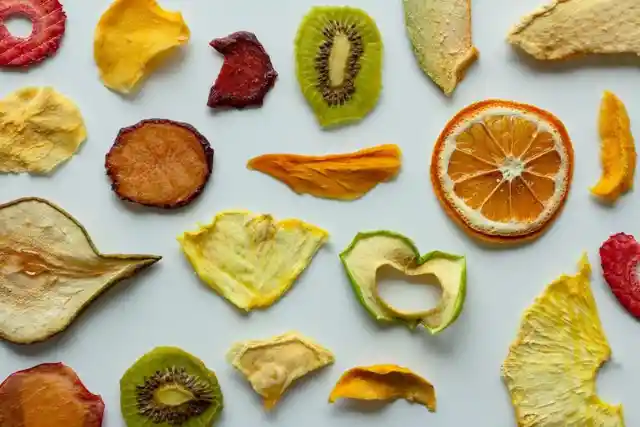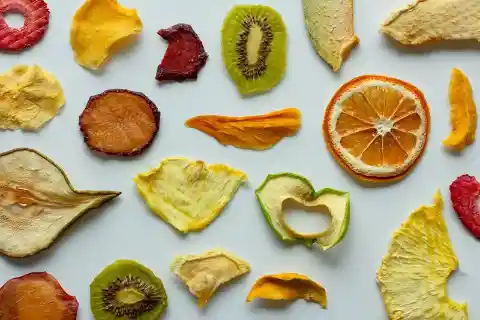Getting a food dehydrator is something you might have never imagined needing in your kitchen. However, it might be one of the best kitchen equipment investments overall. Dehydration is one of the oldest techniques for food preservation. One of the quickest and least expensive ways to preserve your crop is through drying, which has been used for thousands of years to make food last without refrigeration. Additionally, it can reduce the weight of foods suited for camping and trekking, protecting both your back and your wallet.


The most important reason for someone to select traditional techniques of dehydrating over freeze drying is cost. In contrast to an entry-level freeze drying unit, which costs thousands of dollars, dehydrating can be done for little to no money. Your food's moisture level will drop to between 5 and 20% after dehydrating it. The bacteria that cause food to deteriorate are incapable of surviving inside that range. By removing moisture from the food, you can extend the lifespan of your food.
What foods can you dehydrate?
There are a variety of uses for food dehydrators, some of which may surprise you. 1. Fruits and vegetables Dehydrated foods like fruits and vegetables are very popular. Most fruits can be dried. In addition to raisins and dried grapes, dried banana chips, apple slices, apricots, peaches, pineapple, coconut flakes, and other kinds of berries are widely available. Make fruitcakes for the holidays, pies, scones, or muffins with dehydrated fruit. Making your own wholesome chips and crackers from dehydrated vegetables is another flexible option. Sweet potatoes, zucchini, tomatoes, beets, or turnips that have been thinly sliced are an option to potato chips. When dried and seasoned, broad, leafy greens like kale and spinach make delicious chips. A majority of mushroom varieties can be dried out, which extends their shelf life. 2. Nuts and seeds When seeds and nuts are first harvested, they are very moist, and if they are not properly stored, this moisture can cause the food to rot and become rancid. Dehydrating them after slow roasting will keep them fresher for longer. Although one of the healthiest snacks, nuts, and seeds can be difficult to digest when they are raw despite being rich in antioxidants, vitamins, minerals, vital fats, and fiber. The majority of nuts, seeds, and cereals can be dehydrated using heat. 3. Crackers and baked goods Crunchy crackers, bread, and pastries are still favorites among people. The Rawtarian, which specializes in raw substitutes for conventional grain-based treats, claims that a food dehydrator is essential for making crunchy crackers and crusty bread. Dehydrate nuts and seeds, turn them into flour, then add the flour to your preferred recipe. Simply rolling out or forming the dough into the proper shape is all that is required. The dough is dehydrated until it is baked and crisp. To ensure an even and thorough cook, you can dehydrate pie and pizza crusts before filling and topping them. 4. Fish and meat Beef jerky is a staple of outdoor activities such as camping, hiking, and sports. The majority of meats can be dried. Jerky is a well-liked option for Keto and Paleo diets and can also be a wholesome complement to less specialized lifestyles. Meats and fish can be dehydrated simply or turned into jerky with any taste you can think of after being chopped into slices or bite-sized pieces. Herbs, spices, glazes, and exotic ingredients like chocolate and citrus can all be used to season and flavor jerky. Make up your own savory, sour, and hot dishes, and marinate the meat or fish portions before dehydrating. 5. Edible and ornamental plants Flowers and ornamental plants can be dried in a food dehydrator to make potpourri and decorative items. For stunning wreaths and bouquets as well as note cards and gift wrapping, dried flowers and plants can be pressed into artisanal paper. Food dehydrators are a fantastic tool for drying flowers and herbs for cooking. Plants dry fast and elegantly while delightfully maintaining their fragrances and colors when harvested at the peak of freshness. In fact, dehydrating edible plants and flowers quickly can improve their flavors and smells. Herbs and flowers can be used to make tisanes or added to your favorite foods once they have dried. Because dried orange peels contain extremely flammable oils, they make aromatic, chemical-free fire starters.Types of food dehydration
Some of the come food dehydration methods are listed below: Sun drying It’s the oldest and simplest method to dehydrate your food and for sure the cheapest. It’s quite effective in places where sunlight hours are long. You might need a mesh screen and a cover to repel flies and insects Air drying Air drying is another method you can try. In contrast to sun drying, the food needs to be dried under shade. This method is suitable for foods that need shielding from the sun. It is especially effective for herbs and fragile greens that you are keeping for culinary blends or herbal teas.Oven drying With oven drying, food is slowly dried in your home oven at a temperature of about 140 F. Due to their size, ovens are not the most effective dryers on the block. However, if speedy drying is your priority, they can spare you the effort of purchasing a second appliance. Electric dehydrators These equipments have fans and heating components that can swiftly and effectively dry your food. That guarantees almost no spoiling and a delicious end product. The majority of electric dehydrators also have an adjustable dial and temperature gauge. Depending on what you're processing, this can help speed up or slow down the drying process.